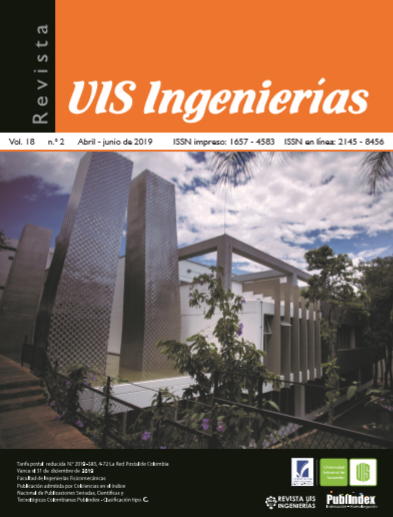The roughness influenced by geometric factors in surface milling
Published 2019-02-07
Keywords
- experimental models,
- ISV,
- CAD/CAM,
- DOE,
- lead
- Tilt,
- roughness ...More
How to Cite
Abstract
By means of experimental, geometric models and in a simulated environment, the roughness values of third order deviations are determined. The simulation environment was developed from integration and simulated verification (ISV) in the CAD / CAM software NX 11. The geometric approaches are based on the analysis of point clouds.
Two experimental designs are carried out to determine the influence of the dynamic geometric factors defined as transverse advance (Ae), lead angle and tilt angle, with a flat tip milling tool. An experiment is developed with the results of locating a zone of influence of the adjustment parameters and validating the precision of the simulated environment. For the second experiment, a factorial model is presented for the factor with the greatest influence on roughness.
As a result of the experimentation, an optimum value (minimum) of roughness is obtained, located in areas where the transversal advance is determinant and of high impact. The main angle has a moderate influence, and the angle is the factor of least influence. The values Roughness minima occur when the transverse advance is low, the angle is low, and the angle of inclination is high. The purpose of the method presented is to obtain a surface free space with the flat-tipped tool.
Downloads
References
P. G. Benardos and G. C. Vosniakos, “Predicting surface roughness in machining: A review,” Int. J. Mach. Tools Manuf., vol. 43, no. 8, pp. 833–844, 2003.
X. Chen, J. Zhao, Y. Dong, S. Han, A. Li, and D. Wang, “Effects of inclination angles on geometrical features of machined surface in five-axis milling,” Int. J. Adv. Manuf. Technol., vol. 65, no. 9–12, pp. 1721–1733, 2013. doi: 10.1007/s00170-012-4293-y
S. M. Wu, “Statistical evaluation and its relationship to of surface finish parameters studies illustrating the influence of common cutting parameters on the workpiece sur- face roughness for single point turning have been performed by a number of investigators I-1-,” vol. 1, 1977.
P. Benardos and G. . Vosniakos, “Prediction of surface roughness in CNC face milling using neural networks and Taguchi’s design of experiments,” Robot. Comput. Integr. Manuf., vol. 18, no. 5, pp. 343–354, 2002. doi: 10.1016/S0736-5845(02)00005-4
J. A. García Barbosa, J. M. Arroyo Osorio, and E. Córdoba Nieto, “Simulation and verification of parametric numerical control programs using a virtual machine tool,” Prod. Eng., vol. 8, no. 3, pp. 407–413, 2014.
Y. Sahin and A. R. Motorcu, “Surface roughness model for machining mild steel with coated carbide tool,” Materials and Design, vol. 26, no. 4. pp. 321–326, 2005.
S. K. Gupta, T. R. Kramer, D. S. Nau, W. C. Regli, and G. Zhang, “Building MRSEV models for CAM applications,” Adv. Eng. Softw., vol. 20, no. 2–3, pp. 121–139, 1994. doi: 10.1016/0965-9978(94)90054-X
B. S. Reddy, J. S. Kumar, and K. V. K. Reddy, “Optimization of surface roughness in CNC end milling using response surface methodology and genetic algorithm,” Int. J. Eng. Sci. Technol., vol. 3, no. 8, pp. 102–109, 2011.
J. Qu and A. J. Shih, “Analytical surface roughness parameters of a theoretical profile consisting of elliptical arcs,” Mach. Sci. Technol., vol. 7, no. 2, pp. 281–294, 2003.

